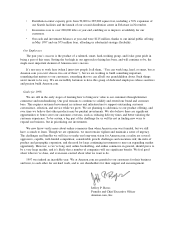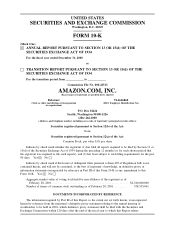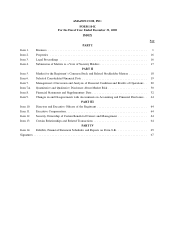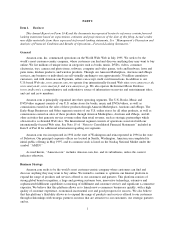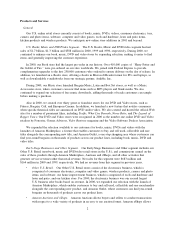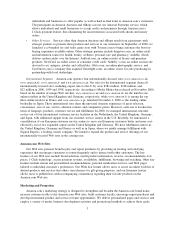Amazon.com 2000 Annual Report Download - page 16
Download and view the complete annual report
Please find page 16 of the 2000 Amazon.com annual report below. You can navigate through the pages in the report by either clicking on the pages listed below, or by using the keyword search tool below to find specific information within the annual report.In addition, we may not benefit in our newer market segments from the first-to-market advantage that we
experienced in the online book market. Our gross profits in our newer business activities may be lower than in
our older business activities. In addition, we may have limited or no experience in new business activities and
our customers may not favorably receive our new businesses. If this were to occur, it could damage our
reputation.
The Loss of Key Senior Management Personnel Could Negatively Affect Our Business
We depend on the continued services and performance of our senior management and other key personnel,
particularly Jeffrey P. Bezos, our President, Chief Executive Officer and Chairman of the Board. We do not
have ‘‘key person’’ life insurance policies. The loss of any of our executive officers or other key employees
could harm our business.
System Interruption and the Lack of Integration and Redundancy in Our Systems May Affect Our Sales
Customer access to our Web sites directly affects the volume of goods we sell and thus affects our net
sales. We experience occasional system interruptions that make our Web sites unavailable or prevent us from
efficiently fulfilling orders, which may reduce our net sales and the attractiveness of our products and services.
To prevent system interruptions, we continually need to: add additional software and hardware; upgrade our
systems and network infrastructure to accommodate both increased traffic on our Web sites and increased sales
volume; and integrate our systems.
Our computer and communications systems and operations could be damaged or interrupted by fire, flood,
power loss, telecommunications failure, break-ins, earthquake and similar events. We do not have backup
systems or a formal disaster recovery plan, and we may have inadequate insurance coverage or insurance limits
to compensate us for losses from a major interruption. Computer viruses, physical or electronic break-ins and
similar disruptions could cause system interruptions, delays and loss of critical data and could prevent us from
providing services and accepting and fulfilling customer orders. If this were to occur, it could damage our
reputation.
We May Not Be Successful in Our Efforts to Expand into International Market Segments
We plan, over time, to expand our reach in international market segments. We have relatively little
experience in purchasing, marketing and distributing products or services for these market segments and may
not benefit from any first-to-market advantages. It will be costly to establish international facilities and
operations, promote our brand internationally, and develop localized Web sites and stores and other systems.
We may not succeed in these efforts. Our net sales from international market segments may not offset the
expense of establishing and maintaining the related operations and, therefore, these operations may never be
profitable.
Our international sales and related operations are subject to a number of risks inherent in selling abroad,
including, but not limited to, risks with respect to:
•currency exchange rate fluctuations,
•local economic and political conditions,
•restrictive governmental actions (such as trade protection measures, including export duties and
quotas and custom duties and tariffs),
•import or export licensing requirements,
•limitations on the repatriation of funds,
•difficulty in obtaining distribution and support,
•nationalization,
8


